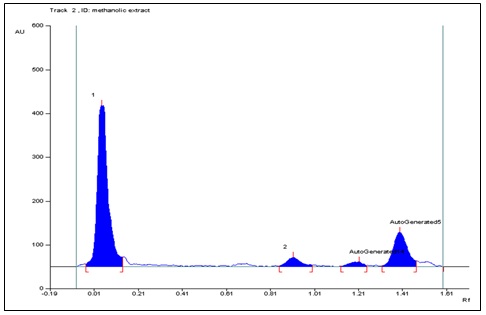Volume 3, Issue 1
Author(s): Rashmi Tambe, R.G Singhal, Kiran Bhise, Maushumi Kulkarni
Abstract: Objective: To establish physical constants and fingerprint profile of Psidium guavaja Linn using high performance thin layer chromatography (HPTLC) technique. Methods: Preliminary phytochemical screening was done, physical constants were evaluated and HPTLC studies were carried out. CAMAG HPTLC system equipped with Linomat V applicator, TLC scanner 3, Reprostar 3 and WIN CATS-4 software were used. Results: Preliminary phytochemical screening of the extracts showed the presence of alkaloids, triterpenes, tannins, saponins, glycosides, phenolic compounds and flavonoids. The proximate analysis showed satisfactory result with respect to foreign matter, moisture content, ash value and extractive values. HPTLC finger printing of methanol extract of leaf powder revealed presence of three polyvalent phytoconstituents with their Rf value 0.95, 1.11, 1.41 at 220nm. Component number 3 at Rf 1.41 showed maximum concentration and presence of total five components with their Rf value 0.18, 0.91, 1.21, 1.42, 1.52 at 450nm.Component number 4 at Rf 1.41 showed maximum concentration. Aqueous extract of leaf powder showed total six components with their Rf value 0.29, 0.74, 0.85, 0.96, 1.31 at 220nm.Component number 4 at Rf 0.96 showed maximum concentration. Conclusions: It can be concluded that HPTLC fingerprint analysis of leaf powder extract of Psidium guavaja can be used as a diagnostic tool for the correct identification of the plant and it is useful as a phytochemical marker and also a good estimator of genetic variability in plant populations.

Fig 1: Chromatogram: HPTLC of methanolic extract of Psidium guavaja (Resolution at 220 nm; vol-20 µl, mobile phase- Mobile phase-n-hexane-ethyl acetate (7:3)
Download Full Article : Click Here
